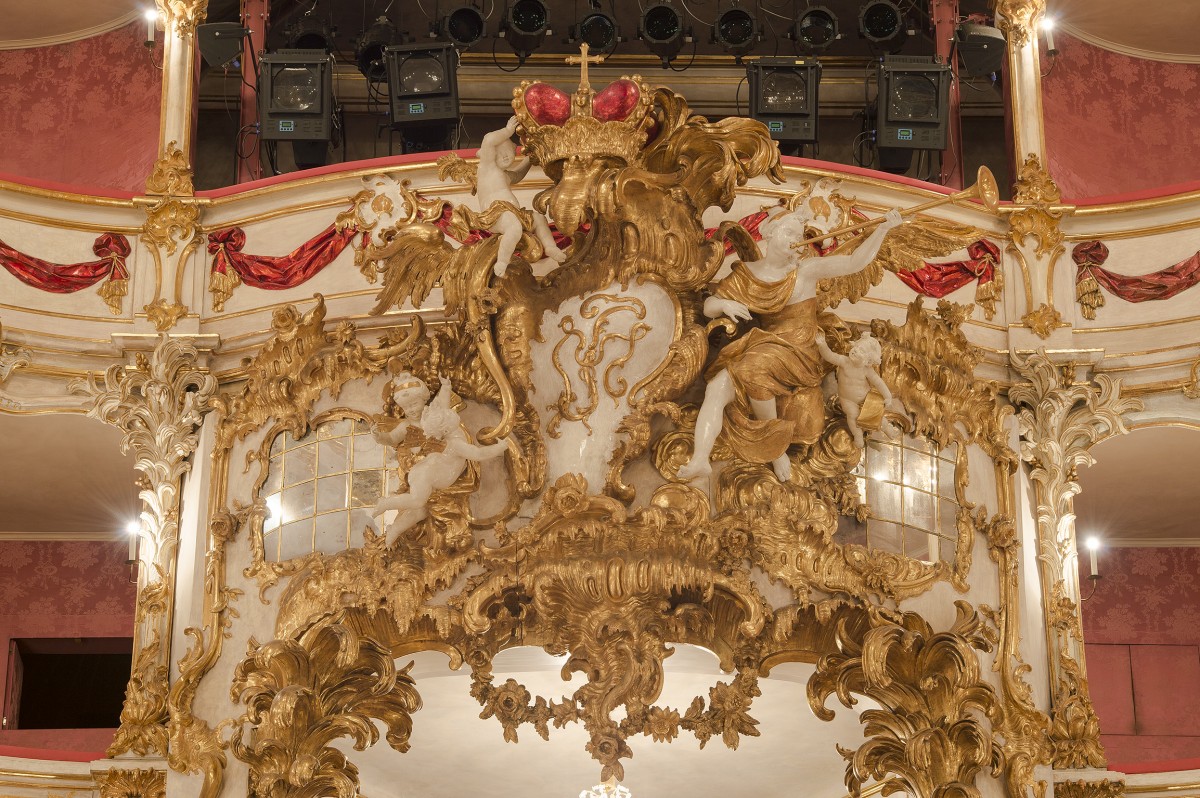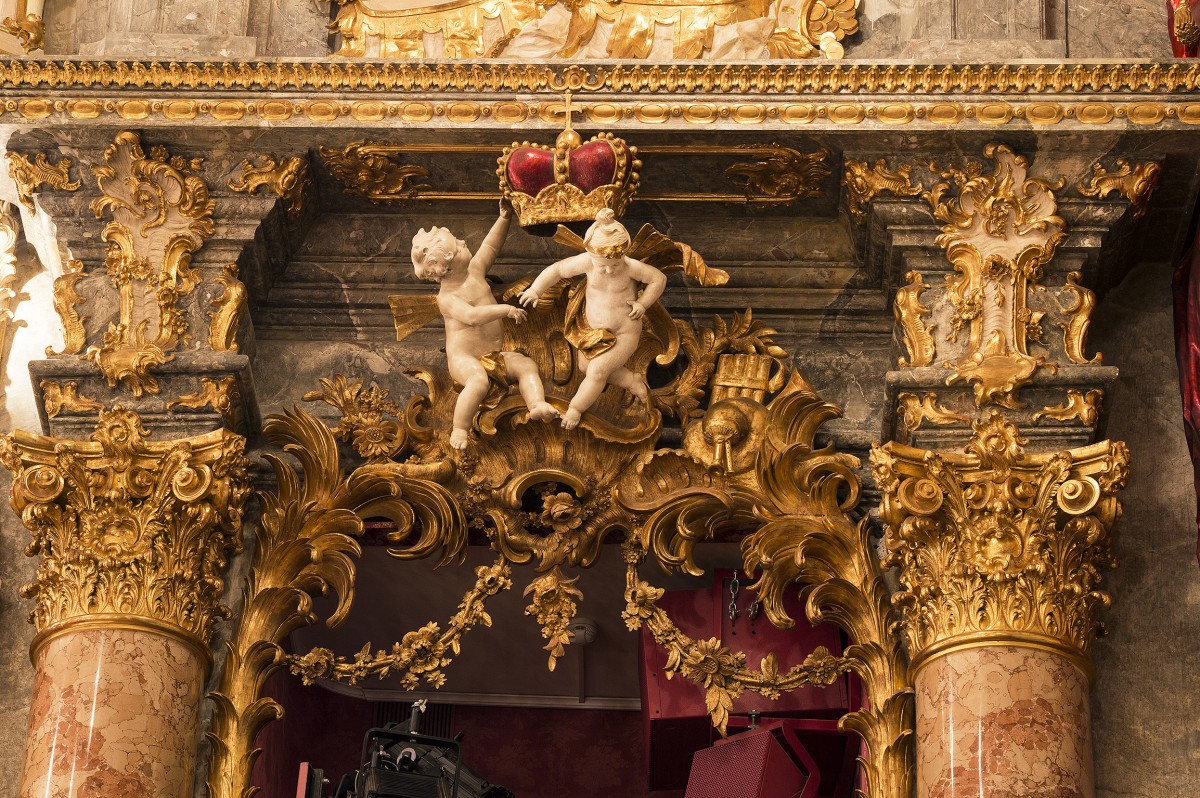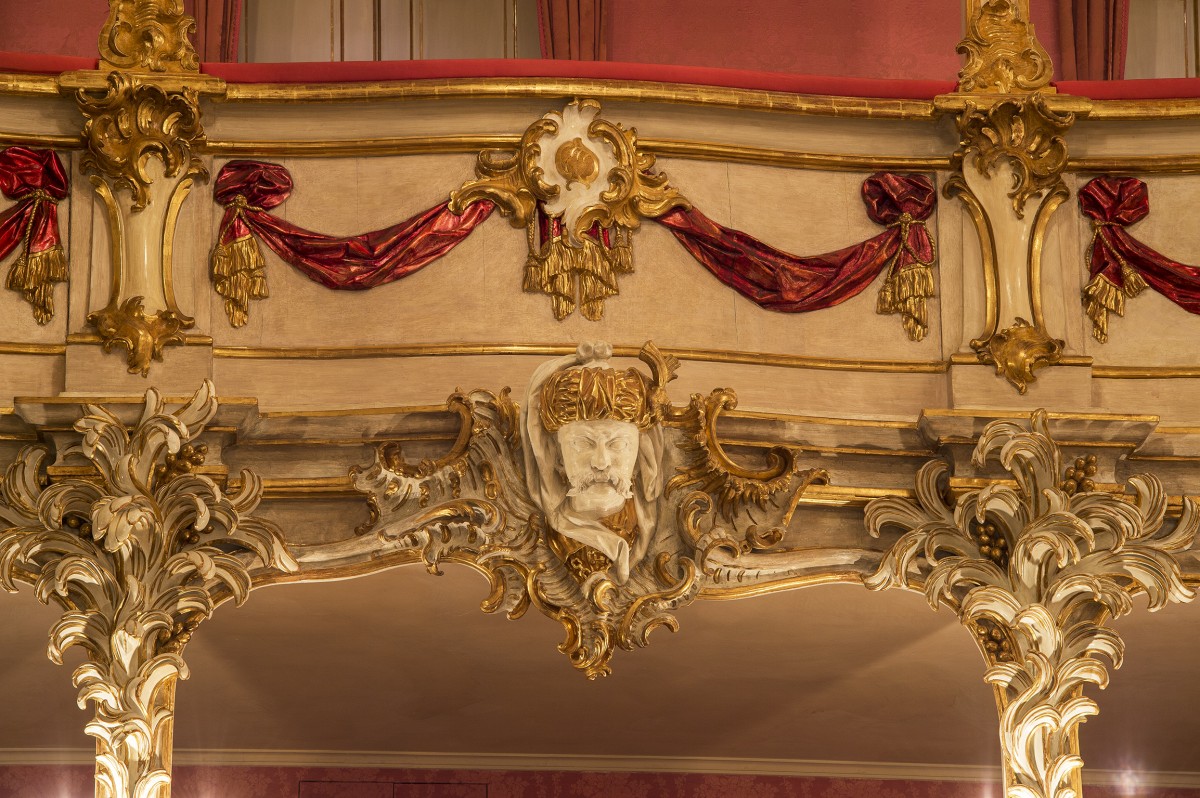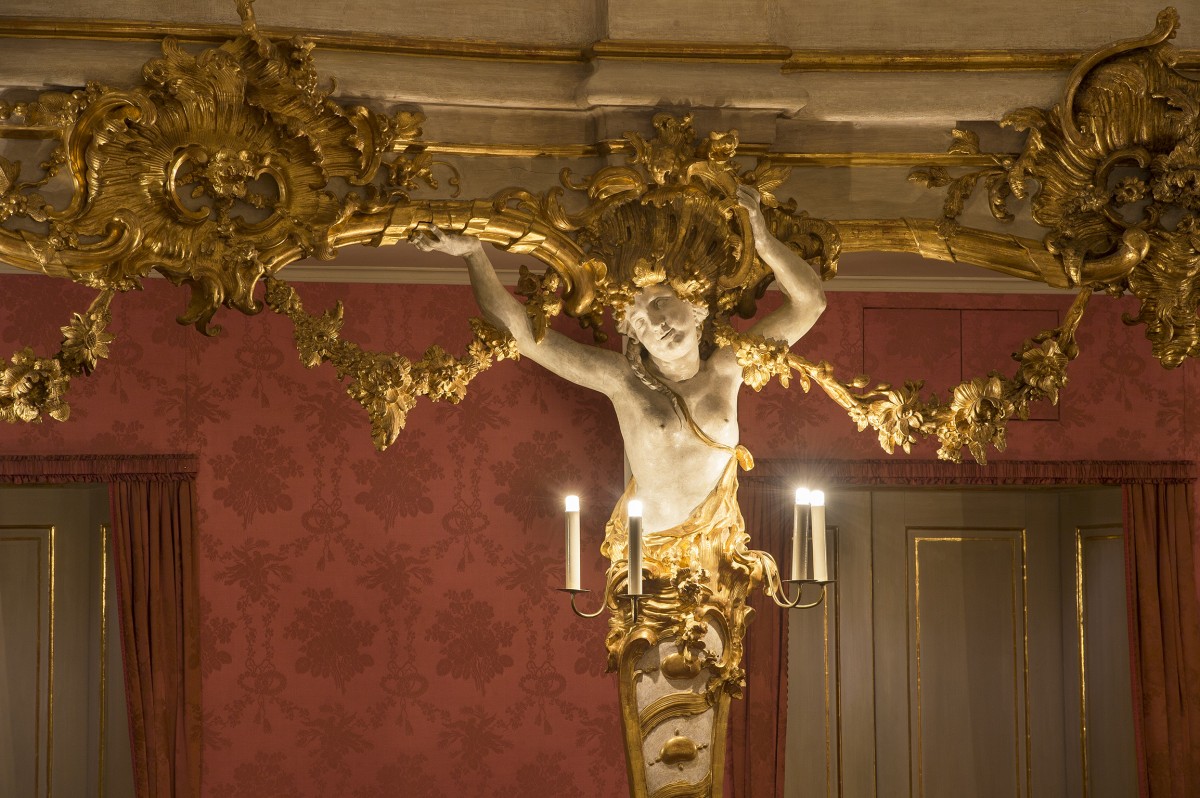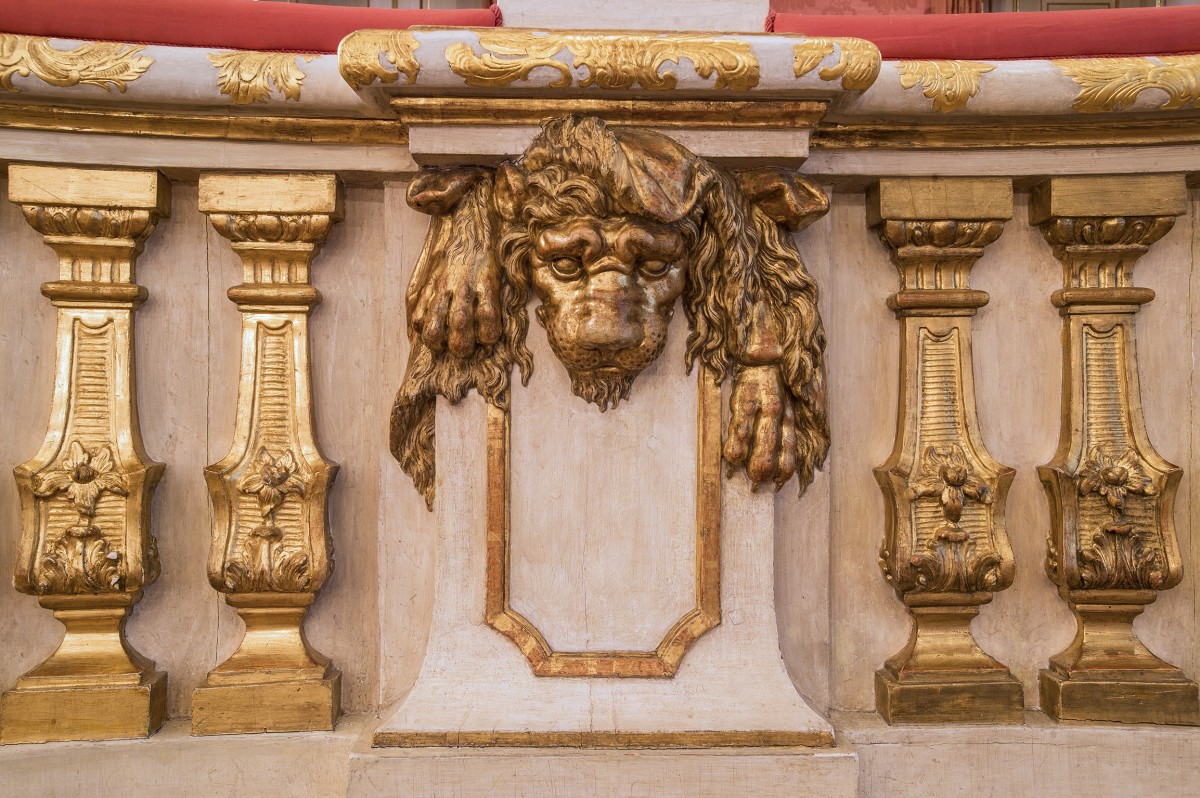Location
Germany, Bavaria, Munich
Munich Residence Cuvillié Theatre (Cuvillié Theater)
Bavarian Department of Stateowned Palaces, Gardens and Lakes
Artwork
Decoration of the Cuvillié Theatre, Munich
Type
Sculptural decoration
Inscriptions
- MJ monogram for Max III. Joseph cartouche above the loge of the electoral prince
Critical History
In Lipperts list the wooden decoration of the Cuvillié Theater has no. 3. Lippert subsumes that the complete decoration was carved by J. B. Straub 1 Volk limits Straubs work for the "Atlantenthermen" at the entrance, the crown of the loge of the electoral prince, the coat of arms of the alliance with "Famafigures" and the putti above the stagearch and the putti above the proszenium loges are works of Straub. 2 Joachim Dietrich (about 1690-1753) also worked there as a carver. Adam Pichler (1690-1761) worked there as the courtcarpenter. The names of the gilder Johann Murpöckh and a painter for ornaments Ambrosius Hörmannstorffer (1791) are also documented. Johann Baptist Zimmermann (1680-1758) was responsible for the stuccoworks and the fresco on the ceiling which was overpainted in 1801.
The theater was built following the plans of Francois Cuvillié the Younger in 1752/53. The decoration must have been completed before October 1753. (opening 12.10.1753) 3
In 19.th century King Ludwig I ordered to remove the theater from the building. The architect Leo von Klenze (1784-1864) wanted to pull down the theatre. Later Max II orderered the restoration of the theatre. It was reopened in 1857. After the 2nd World War the theater was restored (1956-58) and built up in the socalled "Apothekerstock" of the Residence. It was reopened again in June 1958. The last reopening took place in June 2008 after a complete restoration of the theatre.
Construction / Execution
The complete equipment/decoration is executed in wood. The ornaments and sculptures are carved in wood. The surface is completed with ground and polished white and partial gilding. Some details like coats of arms or curtains are pointed out with a polychrome painting layer.
Components
- Carpentry
- Munich, Cuvillié Theatre
- Completed: 1752 – 1753
- Technique(s): sawing, wood carving
- Sculpture
- Munich, Cuvillié Theatre
- Author: Johann Baptist Straub (Wiesensteig ca. 1704 – Munich 1784)
- Completed: 1752 – 1753
- Technique(s): wood carving
- Polychromy
- Munich, Cuvillié Theatre
- Completed: 1752 – 1753
- Technique(s): polished white, water gilding
Comment
The complete equipment was removed several times from its original place and stored in different places. The impression of the original colours can only be seen in a quite reduced way. In 1956 oily overpaintings applied in 19th century were removed. In this context many surfaces were again reconstructed (red glazes ?). On a print of the 18th century you find the comment in French:" Le fond de touttes les loges est peint en arabesques sur un fond lilas" (The backgrond of the loges was originally decorated with arabesque ornaments on a lavender ground).4 Today there is applicated a red textile what makes a great difference.
Conservation-restoration
- 1801
Treatment Description
The fresco on the ceiling and the ornamental decorationpainting of the ceiling and background of the loges were overpainted.
- 1855
Treatment Description
Reinstallation of the wooden equipment. During the storage the cartouches of the trench were destroyed by a fire. The surfaces dating from 18. th century were overpainted with oil as binding media gilding also with oil. Before the architect Leo von Klenze (1784-1864) wanted to pull down the theatre.
- 1956
Treatment Description
After 2nd World War the wooden equipment of the theatre was again installed. During wartime it was stored outside of Munich in Schleißheim. The overpainting of 1855-57 was removed and many wooden parts were stabilized and partially reconstructed. The painting layer e.g. the red glaze and most of the white surfaces were again overpainted or partially reconstructed.
- 2008
Treatment Description
The treatment of the wooden objects was more or less a conservation of the historical condition with some esthetical corrections.
Images
- The decoration of the Cuvillié Theatre, Munich photo Bavarian State Office of Monuments and Sites Michael Forstner 05.2018
- The decoration of the Cuvillié Theatre, Munich photo Bavarian State Office of Monuments and Sites Michael Forstner 05.2018
- The decoration of the Cuvillié Theatre, Munich photo Bavarian State Office of Monuments and Sites Michael Forstner 05.2018
- The decoration of the Cuvillié Theatre, Munich photo Bavarian State Office of Monuments and Sites Michael Forstner 05.2018
- The decoration of the Cuvillié Theatre, Munich photo Bavarian State Office of Monuments and Sites Michael Forstner 05.2018
- The decoration of the Cuvillié Theatre, Munich photo Bavarian State Office of Monuments and Sites Michael Forstner 05.2018
Catalogue entry prepared by Rupert Karbacher
Recommended citation: Rupert Karbacher, Decoration of the Cuvillié Theatre, Munich, in: TrArS – Tracing the Art of the Straub Family, 2018, (accessed 18/11/2025) URL

